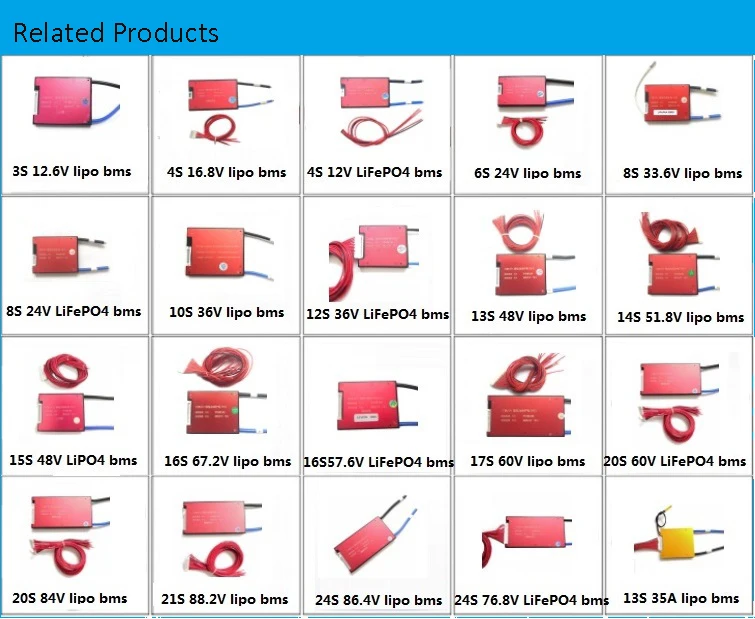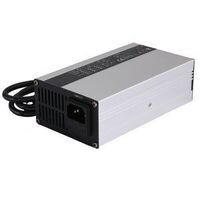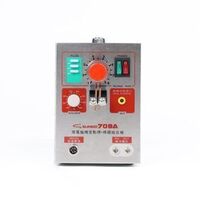waterproof 6S 24V PCB Circuit Boards for 15A 25A 35A 45A Lithium ion Lipo Battery Pack with Balance
-
Supplier: Shenzhen E-Fire Technology Development Co., Limited -
Region: Guangdong, China -
Contact: Ms Little Bear -
Price: $8.00 / >=10 pieces -
Min. Order: 10 pieces
| Board Thickness: | 1.1mm; | Copper Thickness: | 1.0mm; |
| Weight: | 60G; | Brand Name: | CLRD; |
| Features: | waterproof, with balance; | Charging Voltage: | 25.2V; |
| Base Material: | FR-4; | Packaging Detail: | Caton/pp bag; |
| Place of Origin: | China; | Surface Finishing: | oxidation; |
| Model Number: | INR-62415; | color: | red; |
| MOQ: | 10PCS; | Min. Hole Size: | 0.25mm; |
| Payment Terms: | T/T,Paypal; | Current: | 15A 25A 35A 45A 60A; |
| Min. Line Width: | 0.1mm; | Port: | yantian; |
| SKYPE: | e-firesales01; | Supply Ability: | 20000 Piece/Pieces per Month; |
| Aapplication: | power tools; | Temperature Protection: | 65℃ for option; |
| whats app: | +8615692450736; | Min. Line Spacing: | 0.12mm; |


Features: waterproof
With Balance
Same/split port for charge and discharge
Main functions:
Over charge protection,
Over discharge protection
Short circuit protection
balance function
1. Overview
6S24V15A/25A/35A/45A bms is used for 6 series 24V battery pack.
We can design it for various lithium batteries like LiFepo4, LiMn2O4, and Li-polymer etc.
The main functions are: over charge protection, over discharge protection, over current protection, short-circuit protection, temperature protection etc.
According to the customer request we can develop PCM in different sizes and structures.
BMS manufactured by high quality Mos and IC imported . Keep your battery long cycle service life time.
2. Advantage
Use top quality (A-level) protective integrated circuit IC, from the solution of Japan.
Strong load ability, constant discharge current 25/35A/45A/60A , use high voltage resistance, low inner resistance power Mosfet. The heat sink will greatly help cooling.
Specificatios

| 6S 24V | Detail | Spec | |||
| Discharge | Maximal Continuous Discharging Current | 15A | 25A | 35A | 45A |
| Peak Discharging Current | 50A | 60A | 100A | 180A | |
| Over Current Protection Current | 50A | 60A | 100A | 180A | |
| Charge | Charging Voltage | 25.2V | |||
| Charging Current | 15A | 25A | 35A | 45A | |
| Over charge protection | Over Charge Detection Voltage | 4.25±0.025V | |||
| Over Charge Detection Delay Time | 0.5S | ||||
| Over Charger Release Voltage | 4.19±0.05V | ||||
| Cell balancing | Cell balancing Detection Voltage | 4.18V | |||
| Cell balancing Release Voltage | 4.18V | ||||
| Cell balancing Current | 35±5mA | ||||
| Over discharge protection | Over Discharge Detection Voltage | 2.8±0.05V | |||
| Over Discharge Detection Delay Time | 0.5S | ||||
| Over Discharge Release Voltage | 3.0±0.05V | ||||
| Over current protection | Over Current Detection Voltage | 150mV | |||
| Over Current Detection Delay Time | 9MS | ||||
| Over Current Protection Condition | Disconnect the load | ||||
| Short Protection | Detection Condition | Exterior Short Curcuit | |||
| Detection Delay Time | 250uS | ||||
| Release Condition | Disconnect the load | ||||
| Temperature Protection | 65℃ or 75℃ | optional | |||
| Internal Resistance | MOSPET | ≤10mΩ | |||







Warning :
1,Should strictly follow the connection step as the diagram.
2,Double check the connection is correct,then connect it to the battery pack "+","-" Pin.
3,We are not responsible for the defectives caused by wrong connection.

Warranty
1.What is the common port and separate port? what is the difference?
We take 13S48V16A BMS as an example, common port 16A means your charge cathode and discharge cathode are connected in the same point end(our P-), charge cathode and discharge cathode are used in the common connection port, so the charge current and discharge current are the same 16A. while the separate port is separately connected by charge cathode (C-) and discharge cathode (P-), so the charge current and discharge current are different, discharge current 16A, charge current 8A.
2.What is the balance function?
The working principle and function are as followings, when your one cell voltage is up to alarm voltage(Li-ion up to 4.18V, Life Po4 up to (3.6V), then the cell Balance starts to work, balance resistance starts discharge with 35ma(when balance discharge starts to work, BMS will starts a little heat up, which is the normal reflection), the cell is in both charging and discharging status, and others which are not reached to alarm voltage(Li-ion 4.18V, Life Po43.6V)are only in charging status, no discharging, when the fast cell voltage is reached to alarm voltage(Li-ion 4.25V, Life Po43.75V)BMS starts off power protection, all the other cells are all in stop of charging, this process will enable your battery charging in balance current, and your battery voltage are in balance status, but when your cell voltage difference are in a big range, then balance can not be functioning.well
3.The relationship between Battery capacity and BMS current?
There is no direct relationship between Battery capacity and BMS current, big capacity doesn’t mean a big battery, but rely on continue current, that is to say if your engine is powerful, your should choose high current of BMS, it is not relied on battery capacity.
4. What type of charger should I choose?
Lithium battery must choose specific charger, do not use Charger for Lead acid battery, for lead acid charger may have MOS with high pressure breakdown protection, which will not protect of BMS over charge.Life Po4 battery charger voltage=battery string No.X3.6V, while Li-ion battery charger voltage=Battery string No.X4.2V.
5. What current BMS should I choose ?
Take 10S36V as an example: what current BMS you choose is relied on your E-bicycle Motor power and current limitation of controller. eg., choose 16A for below 350W, 25A for below500W, 35A for below 800W, 60A for Below 1000W, higher than 1200W are contact with our service specialist for suggestions, one in all, continue current shall be higher than current limitation in Controller.
6. Whether my BMS damaged?
if you want to judge if the BMS is damaged, please take the following steps, to test if each cell voltage is the same with voltmeter? if the cell voltage difference is over 1.0V, the fault is displayed that it cannot run far, no power supply at the start range, short charge time, all these issues are almost caused by battery cells, if BMS damaged is displayed as no charge, no discharge, no discharge while the battery has voltage.




-
Jiabaida built-in BT BMS 7s 8s 10s 12s 13s 14s 24V 36V 48V 20A 30A automatically identifies BMS with UART NTC

-
Daly bms manufacturer pcb oem electric vehicle ev Lithium LI-ION 18650 Battery Pack 10S 36V 15A 20A BMS management system

-
Development board with LCD touch screen lcd lvds GPIO development board with Ethernet and USB interface driver board

-
USB interface PCB schematic layout engineer design service

-
4 Channel Remote Control 27MHz Circuit PCB Transmitter and Receiver Board with Antenna Radio System for Car Truck Toys

-
China Electronics PCB/PCBA Supplier LED PCB Board Light

-
Schematic diagram of electronic circuit diagram of mobile power pcb board

-
R&D USB Charger PCBA Power Adapter PCB Assembly Smartphone Accessories Electronics Manufacturer

-
High Quality 9W High Voltage SMD 2835 AC220V LED Printing Round Paint LED Aluminum PCB for Tube Light

-
Custom BGA PCBA Supplier Professional Circuit Board Assembly Manufacturer PCB PCBA Fabrication Service Factory

Other Products
-

-
 $65.00 / piece
$65.00 / piece -
 $240.00 / piece
$240.00 / piece -
 $66.00 / piece
$66.00 / piece -
 $68.00 / piece
$68.00 / piece -
 $65.00 / piece
$65.00 / piece -
 $85.00 / piece
$85.00 / piece -
 $31.00 / piece
$31.00 / piece -
 $225.00 / set
$225.00 / set




















